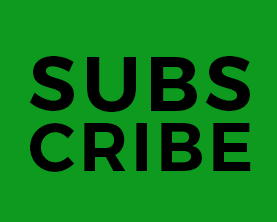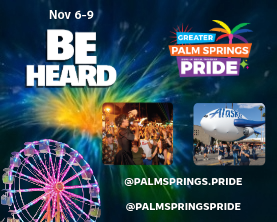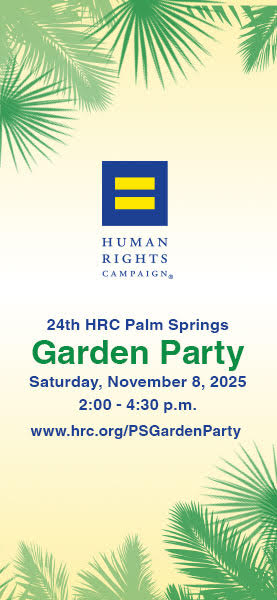By Jonathan Fernan
The chant for LGBTQ+ equality reverberates as a testament to decades of resilience, perseverance, and progress. The LGBTQ+ activism movement has been at the forefront of creating change with individuals, organizations, and communities all working towards a common goal: equality for all.
Origins of the LGBTQ+ Movement
A notable event in the modern-day LGBTQIA+ rights movement was the Stonewall riots in New York City in 1969. A police raid on the Stonewall Inn, a popular gay bar in Greenwich Village, sparked the uprising. This event was one of many that marked a turning point in the fight for LGBTQ+ rights. Leading up to this event was a series of others that played integral roles in the course of the LGBTQ+ movement.
Key Milestones in LGBTQ+ Activism
1948 & 1953
Alfred Kinsey, an American biologist, and sex researcher, published two landmark studies, the Kinsey Reports. These reports, “Sexual Behavior in the Human Male” (1948) and “Sexual Behavior in the Human Female” (1953), provided comprehensive data on human sexual behavior, including same-sex experiences. They challenged prevailing beliefs about homosexuality and helped reduce its stigma.
1950s: The formation of organizations, including the Mattachine Society and the Daughters of Bilitis, laid the groundwork for public visibility. Yet, these early efforts often faced backlash and police harassment.
1966: In 1966, the Compton’s Cafeteria riot took place and proved to be not only one of the most influential events in the LGBTQ+ movement in San Francisco, but across the country. Triggered by police harassment of drag queens and transgender individuals, particularly trans women, it marked one of the earliest LGBT-related riots in the U.S. and heralded the beginning of transgender activism in San Francisco.
1969: Three years later, the Stonewall riots took place in New York City. These riots were a series of spontaneous, violent demonstrations by the LGBTQ+ community in response to a police raid at the Stonewall Inn, a popular gay bar. These riots are considered a pivotal moment in LGBTQ+ history, as they catalyzed the modern LGBTQ+ rights movement in the United States.
June 1970 Following the Stonewall Uprising and the Compton’s Cafeteria riot, the first Pride march occurred in June 1970 in New York City. The decade also saw the rise of the LGBTQ+ choral movement, a testimony to the intertwined relationship of activism with music and queer performing arts.
December 1973
The board of the American Psychiatric Association votes to remove homosexuality from its list of mental illnesses.
June 1977
Singer and conservative Southern Baptist Anita Bryant leads a successful campaign with the “Save Our Children” Crusade to repeal a gay rights ordinance in Dade County, Florida. Bryant faces severe backlash from gay rights supporters across the U.S. The gay rights ordinance will not be reinstated in Dade County until December 1, 1998, more than 20 years later.
November 1977
Harvey Milk wins a seat on the San Francisco Board of Supervisors and is responsible for introducing a gay rights ordinance protecting gays and lesbians from being fired from their jobs. Milk also leads a successful campaign against Proposition 6, an initiative forbidding homosexual teachers. A year later, on November 27, 1978, former city supervisor Dan White assassinates Milk. White’s actions are motivated by jealousy and depression, rather than homophobia.
May 1979
Dan White is convicted of voluntary manslaughter and is sentenced to seven years in prison. Outraged by what they believed to be a lenient sentence, more than 5,000 protesters ransack San Francisco’s City Hall, doing hundreds of thousands of dollars’ worth of property damage in the surrounding area.
The following night, approximately 10,000 people gather on San Francisco’s Castro and Market streets for a peaceful demonstration to commemorate what would have been Milk’s 49th birthday.
1980s: This decade was marred by the AIDS crisis. Activist groups like ACT UP raised awareness, fighting for medication and against widespread stigma.
On July 3, 1981The New York Times prints the first story of a rare pneumonia and skin cancer found in 41 gay men in New York and California. The CDC initially refers to the disease as GRID, Gay Related Immune Deficiency Disorder.
When the symptoms are found outside the gay community, Bruce Voeller, biologist and founder of the National Gay Task Force, successfully lobbies to change the name of the disease to AIDS. And on March 10, 1987, AIDS advocacy group ACT UP (The AIDS Coalition to Unleash Power) is formed in response to the devastating affects the disease has had on the gay and lesbian community in New York. The group holds demonstrations against pharmaceutical companies profiteering from AIDS-related drugs as well as the lack of AIDS policies protecting patients from outrageous prescription prices. Hundreds of thousands of activists take part in the National March on Washington on October 11, 1987, to demand that President Ronald Reagan address the AIDS crisis. Although AIDS had been reported first in 1981, it is not until the end of his presidency that Reagan speaks publicly about the epidemic. The World Health Organization organizes the first World AIDS Day, December 1, 1988, to raise awareness of the spreading pandemic.
1990s to early 2000s: The fight for marriage equality began earnestly, with activists pushing for legal recognition of same-sex relationships. In 1993, the discriminatory “Don’t Ask, Don’t Tell” policy was issued, banning gay, lesbian, and bisexual service members from the American military for 17 years, until it was lifted in 2011. On April 1, 1998, Coretta Scott King, widow of civil rights leader Martin Luther King, Jr., calls on the civil rights community to join the struggle against homophobia. She receives criticism from members of the black civil rights movement for comparing civil rights to gay rights. The Matthew Shepard Act is passed by Congress and signed into law by President Obama on October 28th, 2009, The measure expands the 1969 U.S. Federal Hate Crime Law to include crimes motivated by a victim’s actual or perceived gender, sexual orientation, gender identity or disability.
2010s: The U.S. saw the federal legalization of same-sex marriage on June 26, 2015, a monumental victory for LGBTQ+ rights. However, always dynamic, the movement shifted its focus to other pressing issues like transgender rights, visibility, and combating anti-LGBTQ+ legislation. (Currently the ACLU, HRC, & Truth Out are tracking 850+ anti-LGBTQ bills in the U.S.)
2020s: With the world constantly changing, the LGBTQ+ community continues to fight for equality and representation. The recent surge of Black Lives Matter protests has also brought attention to intersectionality within the LGBTQ+ movement and the importance of amplifying marginalized voices. Not to mention, in 2023 alone, more anti-LGBTQ bills were brought forth in state and local legislatures, signifying how much work is left to be done. In a move of solidarity with the LGBTQ+ community, President Biden proclaimed June 2023 “Lesbian, Gay, Bisexual, Transgender, Queer, and Intersex Pride Month,” and spoke out against these hateful acts.
Current Challenges
While we’ve made impressive strides, the fight for complete equality persists.
With this current administration, the LGBTQ+ community are facing the biggest challenges to date. Some of the most pressing issues include:
Discriminatory legislation: Despite legalizing marriage equality, there are still no federal protections for LGBTQ+ individuals in areas such as employment, housing, healthcare, and adoption.
Transgender rights: Transgender individuals continue to face discrimination and violence at alarming rates. Advocacy efforts remain ongoing to ensure equal rights and protections for the trans community.
Rise of anti-LGBTQ+ sentiments: Hate crimes against LGBTQ+ individuals have been rising in recent years, with a notable spike during the COVID-19 pandemic. We must continue educating and advocating against these harmful attitudes.
Battles We Are Still Fighting
Along with these current challenges, ongoing battles exist for the LGBTQ+ community to gain equal rights and representation.
Conversion therapy: This harmful practice, which aims to change an individual’s sexual orientation or gender identity, is still legal in many states. Efforts are being made to ban conversion therapy nationwide.
Discrimination in healthcare: Many LGBTQ+ individuals face discrimination when seeking healthcare, leading to inadequate or even denied treatment. Advocacy efforts focus on implementing policies that protect the rights and well-being of LGBTQ+ patients.
Intersectionality: The LGBTQ+ community comprises individuals from all backgrounds and identities. It’s essential to recognize and address the intersectional discrimination faced by LGBTQ+ individuals who also face racism, sexism, ableism, and other forms of oppression.
The Role of Organizations in the LGBTQ+ Movement
Locally and globally, organizations play a crucial role in advocating for LGBTQ+ rights and creating safe spaces for the community.
Gay organizations run by volunteers, such as The Trevor Project and GLSEN, provide resources and support for LGBTQ+ youth in schools. The Human Rights Campaign advocates for LGBTQ+ rights on a political level, working towards legislation that protects the community’s rights.
Collectively, these organizations play a crucial role in fighting for equality and creating a more inclusive society for LGBTQ+ individuals.
The history of the LGBTQ+ movement showcases the relentless spirit of numerous activists. There are still many fights to be won, but the movement has come a long way. We look forward to the future with hope, and we must remember to never give up as we march on to create a more inclusive world.
Today and every day, we remember the brave souls who paved the way and those still championing equal rights today. More now than ever, the fight continues



